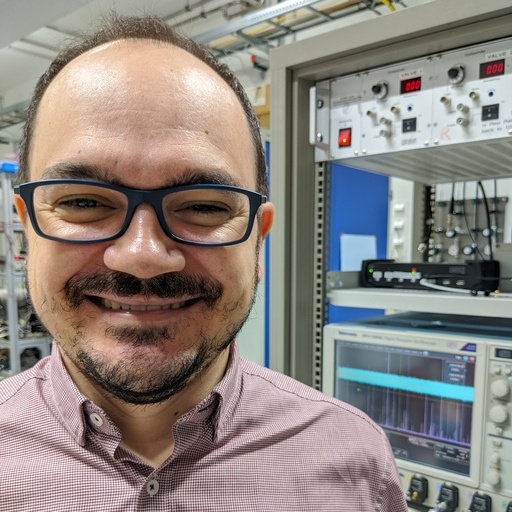
Cristóbal Pérez
| AREA | RESEARCH GROUP | INSTITUTE |
|---|---|---|
| Chemistry | Spectroscopy of Plasmas and Supersonic Jets | CINQUIMA Institute |
I obtained my PhD in chemistry at the University of Valladolid in 2011 under the supervision of Prof. José Luis Alonso Hernández and Prof. Juan Carlos López Alonso, studying the gas-phase structure of molecules of biological interest using rotational spectroscopy and laser ablation vaporization techniques.
For three years (2011-2014), I worked as a postdoctoral researcher at the University of Virginia (USA) in the group of Prof. Brooks H. Pate. At this stage I specialized in the development of instrumentation for broadband spin spectroscopy and its application for the structural determination of water aggregates and microsolvate molecules.
After this period, in 2014, I joined Prof. Melanie Schnell's group in Hamburg (Germany), first on an Alexander von Humboldt fellowship and later as a senior researcher at the Deutsches Elektronen-Synchrotron (DESY). Here I worked on the development of experimental techniques for the detection of molecular chirality with spin spectroscopy by ¨Three-wave mixing¨ and chiral tagging experiments.
In 2018 I worked at the University of the Basque Country with a Ramón y Cajal contract that I declined after nine months to continue my research in Germany.
In 2021 I returned to the University of Valladolid with a Beatriz Galindo Senior contract in the Department of Physical Chemistry and Inorganic Chemistry.
Study the structure of molecules and molecular aggregates of interest using broadband rotational spectroscopy. Rotational spectroscopy uses low frequency light, typically in the microwave region of the electromagnetic spectrum, to excite transitions between rotational levels. These energy levels are determined by the principal moments of inertia of the molecule and are therefore directly related to the distribution of mass relative to the molecular center of mass. The fact that the measurement is connected to the mass distribution, and not just the total mass, makes molecular rotational spectroscopy ideal for the analysis of isomers, confomers and even isotopologues. This allows one of the most accurate techniques for gas-phase structure determination. Additionally we study the interactions that take place and stabilize molecular aggregates of interest such as hydrogen bonds and dispersive forces. More recently I have participated in the development of techniques to differentiate enantiomers, which show identical rotational spectra with conventional rotational spectroscopy. These new techniques open the door to more analytical applications of rotational spectroscopy.
My vision is to continue with the characterization studies of molecular aggregates and to expand the field of application of rotational spectroscopy, not only in fundamental research, but also in analytical applications.

